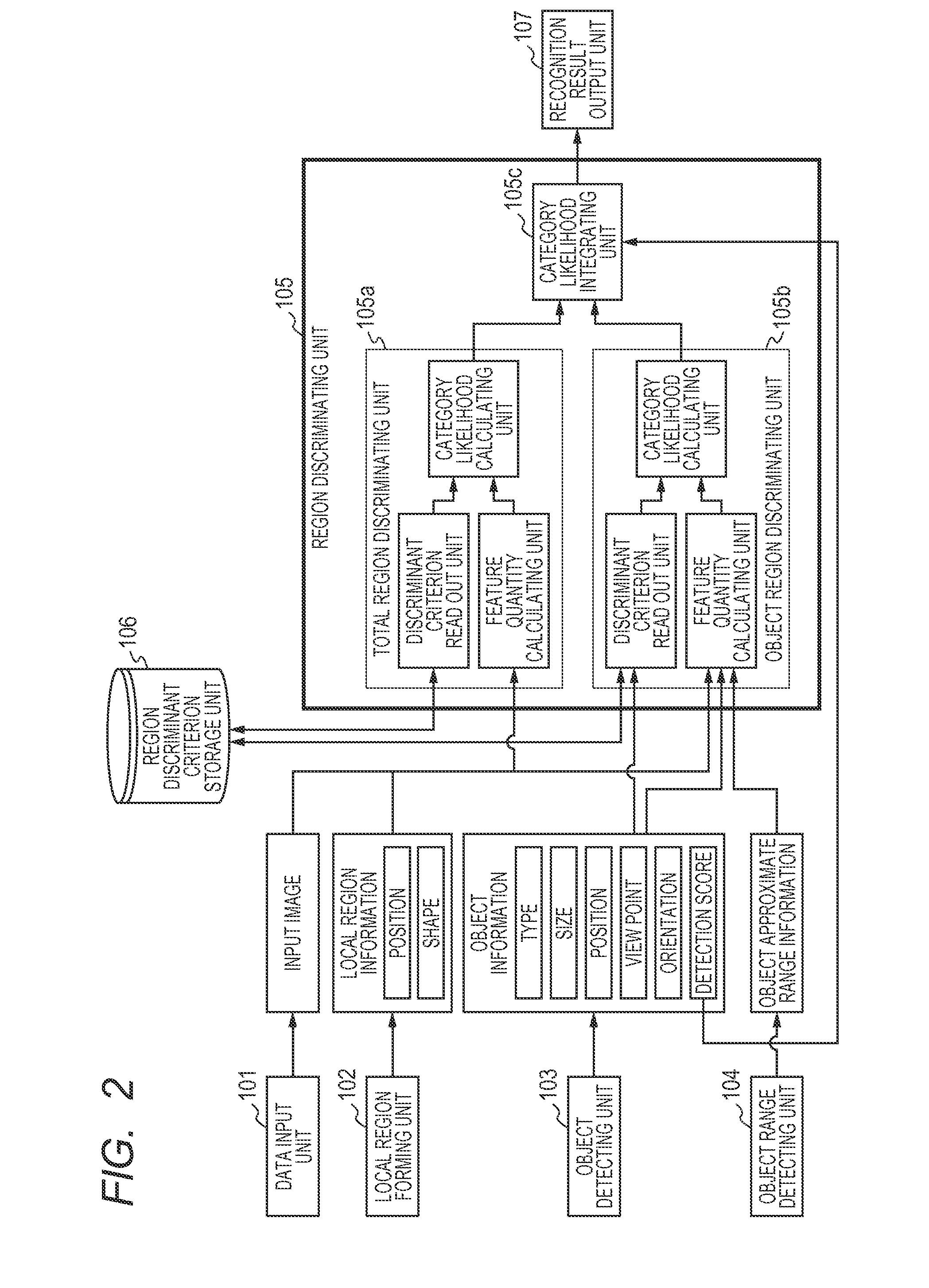Image recognizing apparatus, image recognizing method, and storage medium
a technology of image recognition and image, applied in the field of image recognition apparatus, image recognition method, and storage medium, can solve the problems of low accuracy of the boundary of the obtained region division result, erroneously discriminating foreground and background, and objects contain errors
- Summary
- Abstract
- Description
- Claims
- Application Information
AI Technical Summary
Benefits of technology
Problems solved by technology
Method used
Image
Examples
first embodiment
[0032]In a first embodiment, a method is described that receives a two-dimensional image data as an input image and then determines which categories of objects regions in the input image belong to. In this embodiment, the image is divided into multiple local regions, and the categories of objects are discriminated for each local region. The categories of objects dealt with in this embodiment are defined to fall into two categories. One category contains objects, such as a human body and an animal. The other category contains background regions, such as sky, a mountain, grass and a building.
[0033]In this embodiment, the following measures are taken. First, the categories of objects in the local regions are discriminated based on the feature quantities in the local regions. This process is the same as that of a conventional method. A discriminant criterion used at this time is the same as that of the conventional method. In this embodiment, the criterion is called a general-purpose di...
second embodiment
[0162]A second embodiment of the present invention is described. As with the first embodiment, the second embodiment receives the two-dimensional image data as an input image, and recognizes the category of an object in the image and its region. Note that the second embodiment has an object to correctly extract the regions of predetermined target objects, such as a human body, a horse and a car. All the regions of the categories of objects other than the target objects are regarded as the background region, and the regions are not discriminated from each other.
[0163]This embodiment specifically emphasizes correct discrimination as to which object a region corresponds to in the case where the target objects overlap with each other. FIG. 13A illustrates a simple and direct example of a target to be image-recognized in this embodiment. The diagram illustrates an image of a person riding a horse. It is generally difficult to discriminate to which object a local region in an overlapped r...
third embodiment
[0198]A third embodiment of the present invention is described. The third embodiment has an object to estimate the type, region, position, orientation, and overlapping relationship of industrial components, which are objects, using, as input data, data on a range image where one or more industrial components are taken. Here, a usage is assumed that causes a manipulator to automatically grasp an object based on the recognition result.
[0199]The third embodiment is disclosed as an example for indicating that the present invention is applicable not only to the embodiments having been described above but also widely to pattern recognition according to various configurations. This embodiment adopts a method that is largely different from the above two embodiments in discrimination of the local region and detection of the object. This embodiment includes an operation flow of alternately and repeatedly processing recognition of discriminating the local region and recognition of detecting th...
PUM
 Login to View More
Login to View More Abstract
Description
Claims
Application Information
 Login to View More
Login to View More - R&D
- Intellectual Property
- Life Sciences
- Materials
- Tech Scout
- Unparalleled Data Quality
- Higher Quality Content
- 60% Fewer Hallucinations
Browse by: Latest US Patents, China's latest patents, Technical Efficacy Thesaurus, Application Domain, Technology Topic, Popular Technical Reports.
© 2025 PatSnap. All rights reserved.Legal|Privacy policy|Modern Slavery Act Transparency Statement|Sitemap|About US| Contact US: help@patsnap.com



